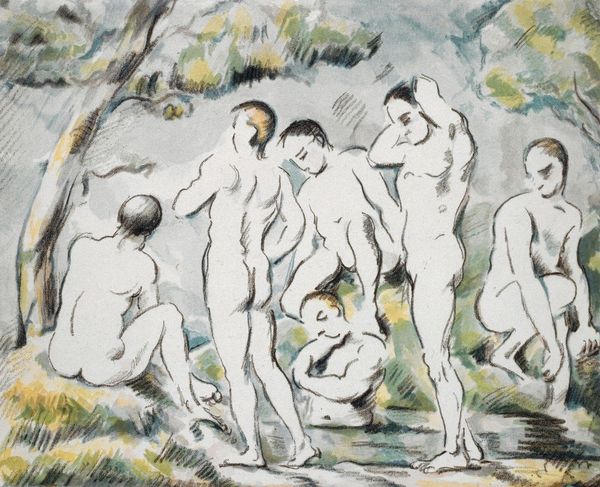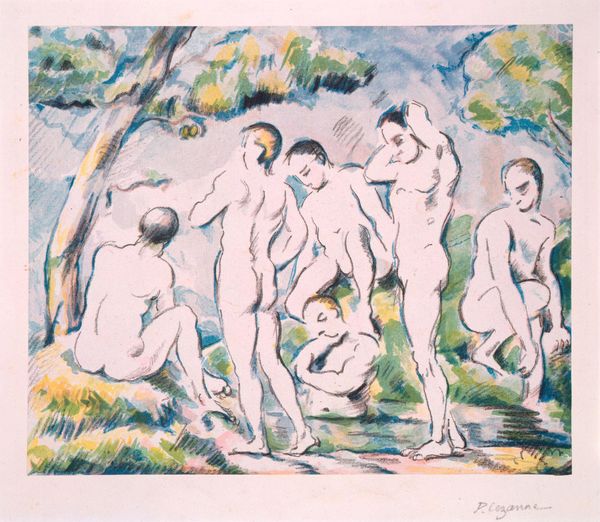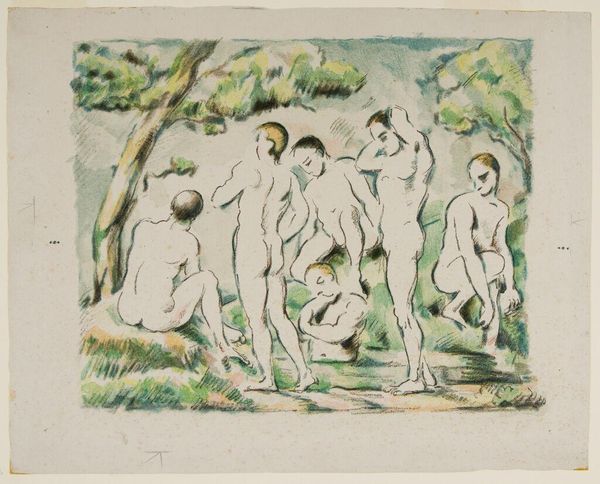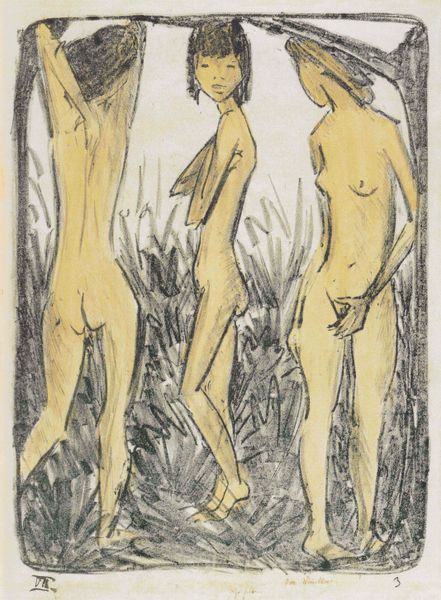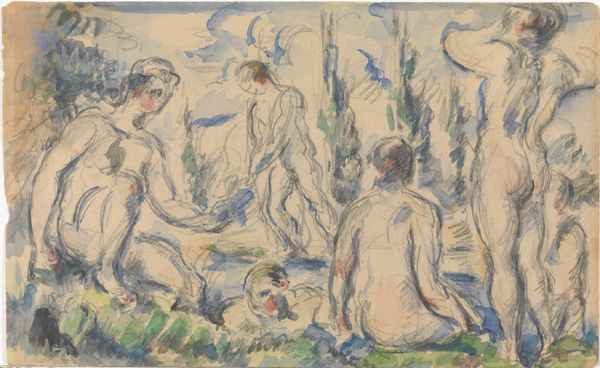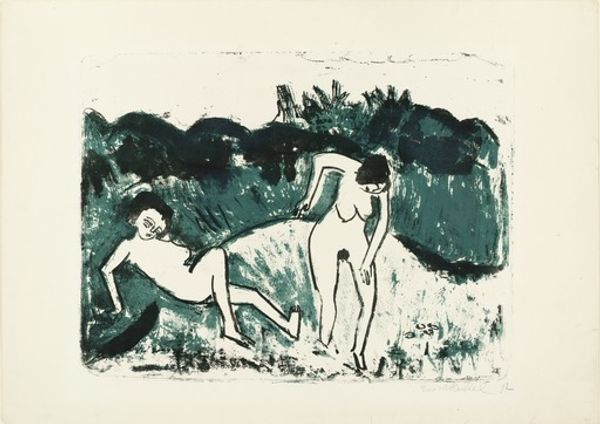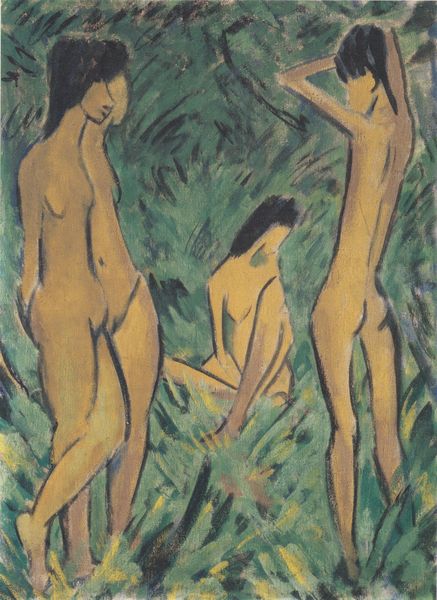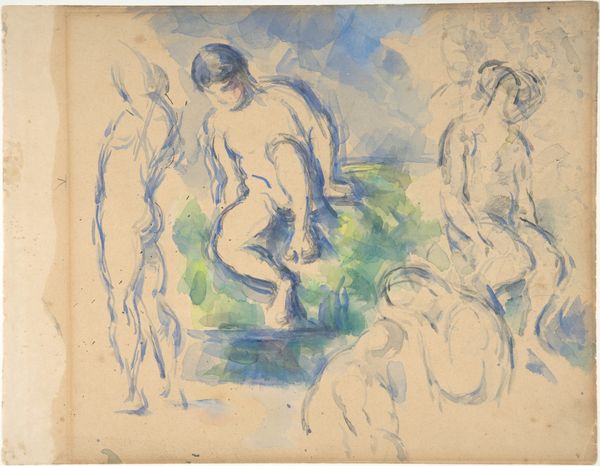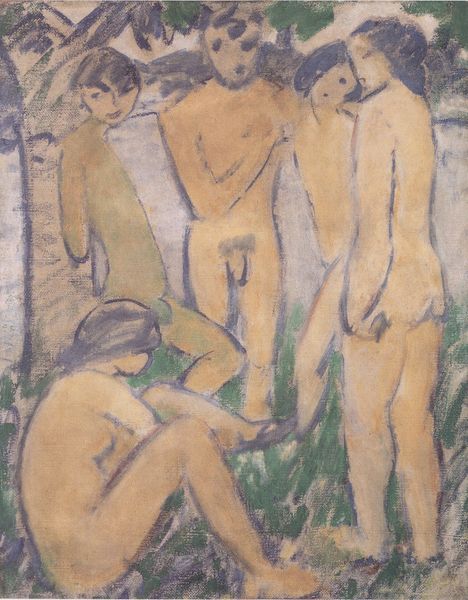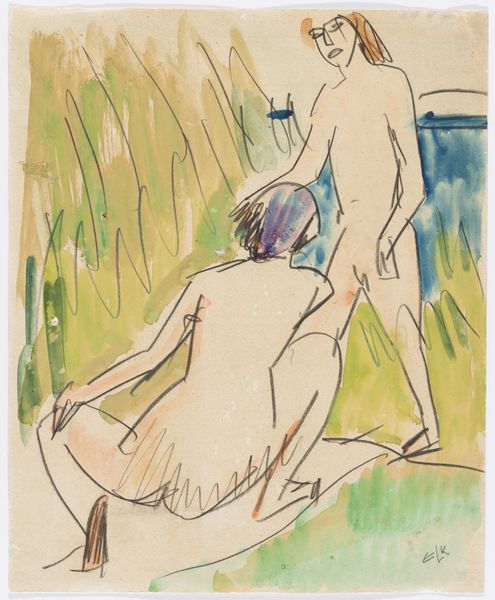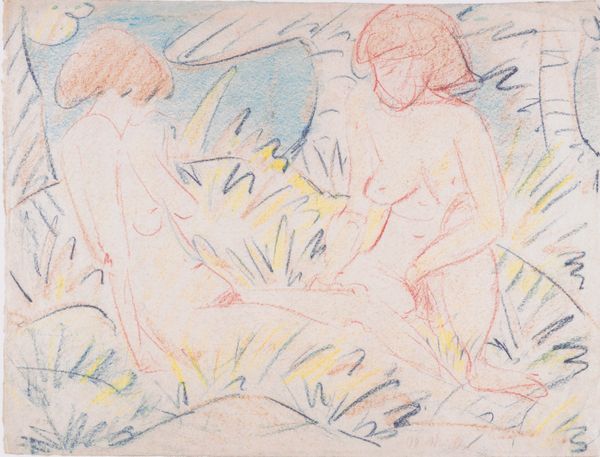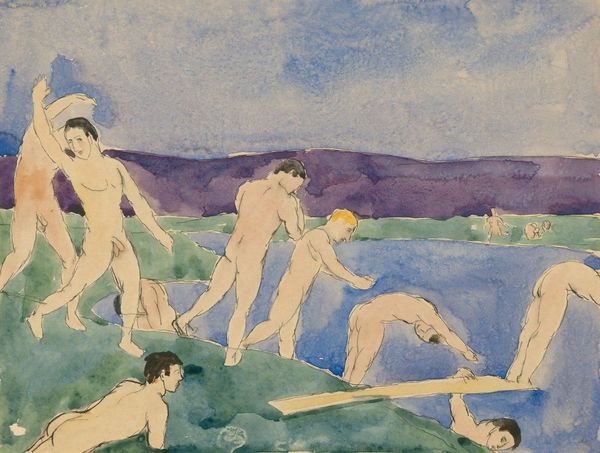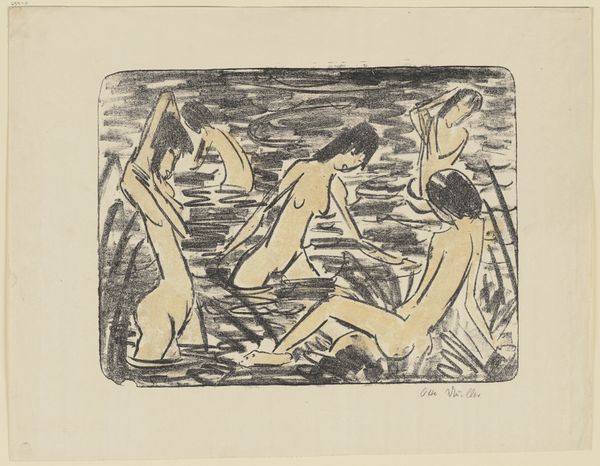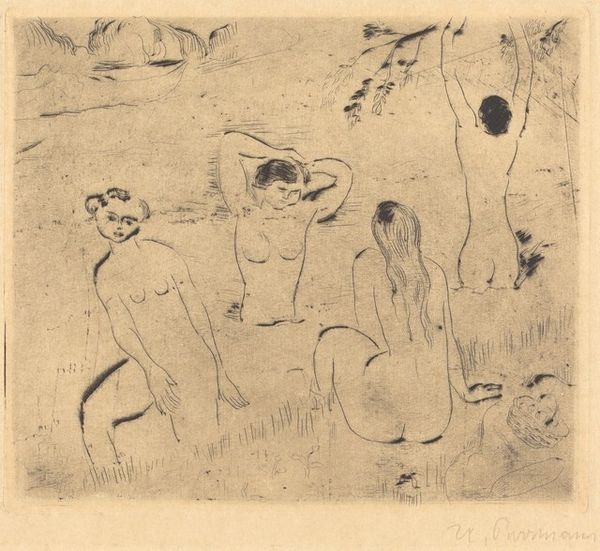
Dimensions: overall: 23.6 x 29.1 cm (9 5/16 x 11 7/16 in.)
Copyright: National Gallery of Art: CC0 1.0
Editor: Here we have Paul Cézanne’s "The Bathers (Small Plate)," a watercolor print from 1897. It depicts a group of nude figures in a landscape setting, almost like they're emerging from the forest itself. It feels quite serene, yet there’s also something unsettling about the way the figures blend into their surroundings. How do you interpret this work? Curator: Cézanne’s "Bathers" is incredibly compelling. Beyond the surface-level tranquility, I see a challenge to the established norms of representation, particularly regarding the male nude and its relation to nature. Considering its time, this piece breaks from idealized portrayals, doesn't it? Editor: Absolutely. There’s a raw, almost awkward quality to the figures. Curator: Precisely. Think about the male gaze and the history of the nude in art. Typically, these figures are rendered as objects of desire. Here, however, Cézanne subverts that. They are presented almost without gender; more like forms that exist within the landscape, divorced from a specific cultural context. Could we consider the absence of an obvious narrative or classical references as a commentary on contemporary societal anxieties about gender and identity in the face of modernization? Editor: That’s a very interesting point! The figures are anonymous, almost lost within the landscape, which makes them relatable and strangely vulnerable. It invites questions about how men relate to their bodies, each other, and nature. Curator: And look closely at his brushstrokes. Loose, broken. It emphasizes that fragmentation of identity, reflecting how modernization impacts tradition, pushing figures out of preconceived notions. What I appreciate about Cézanne is the way he uses his art to explore these intersections of identity, environment, and social expectations. What do you make of the color palette? Editor: The limited, earthy tones, and blues, almost drain them of character and individual specificity, yet create a dream-like atmosphere, inviting introspection about our primal relationship with the natural world. I'd never considered it that way. Curator: Precisely. It is this challenge to norms, a subversion, a commentary about culture, identity, and their fragmentation in modern times. Food for thought.
Comments
No comments
Be the first to comment and join the conversation on the ultimate creative platform.
